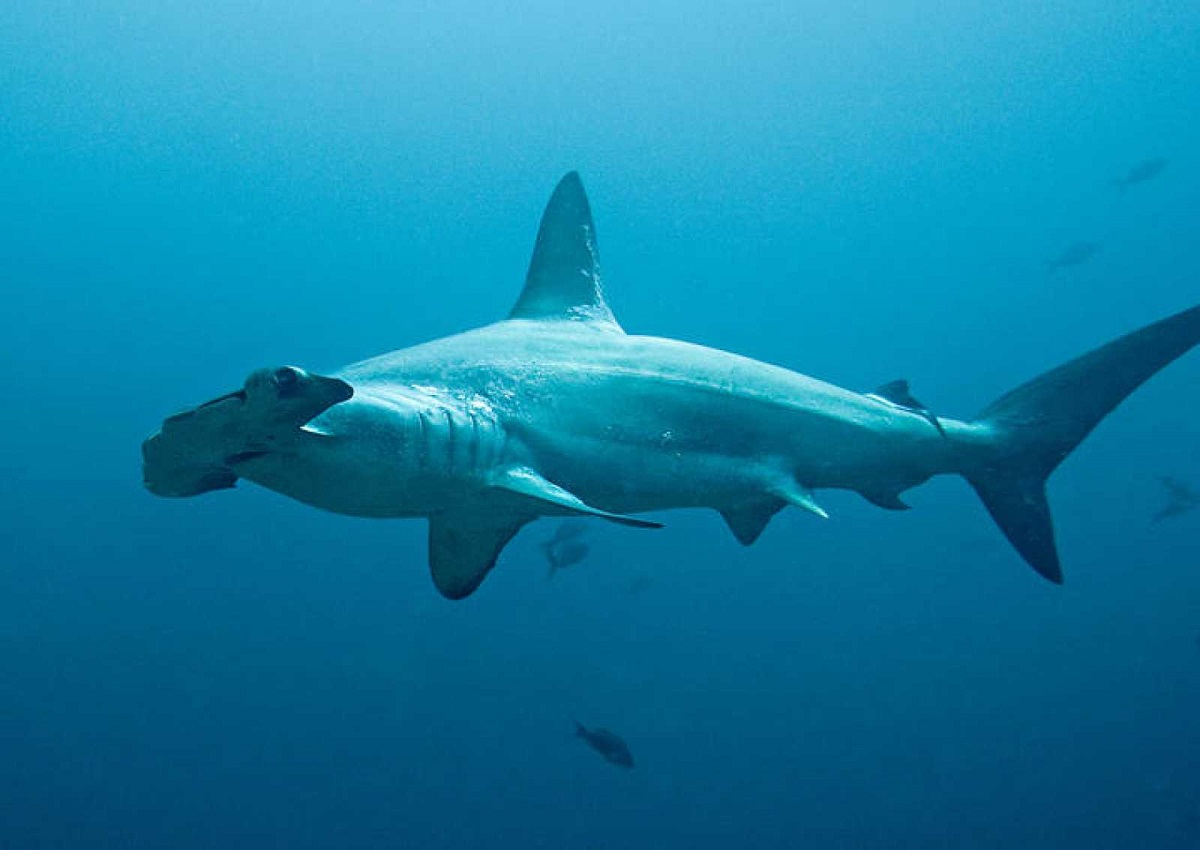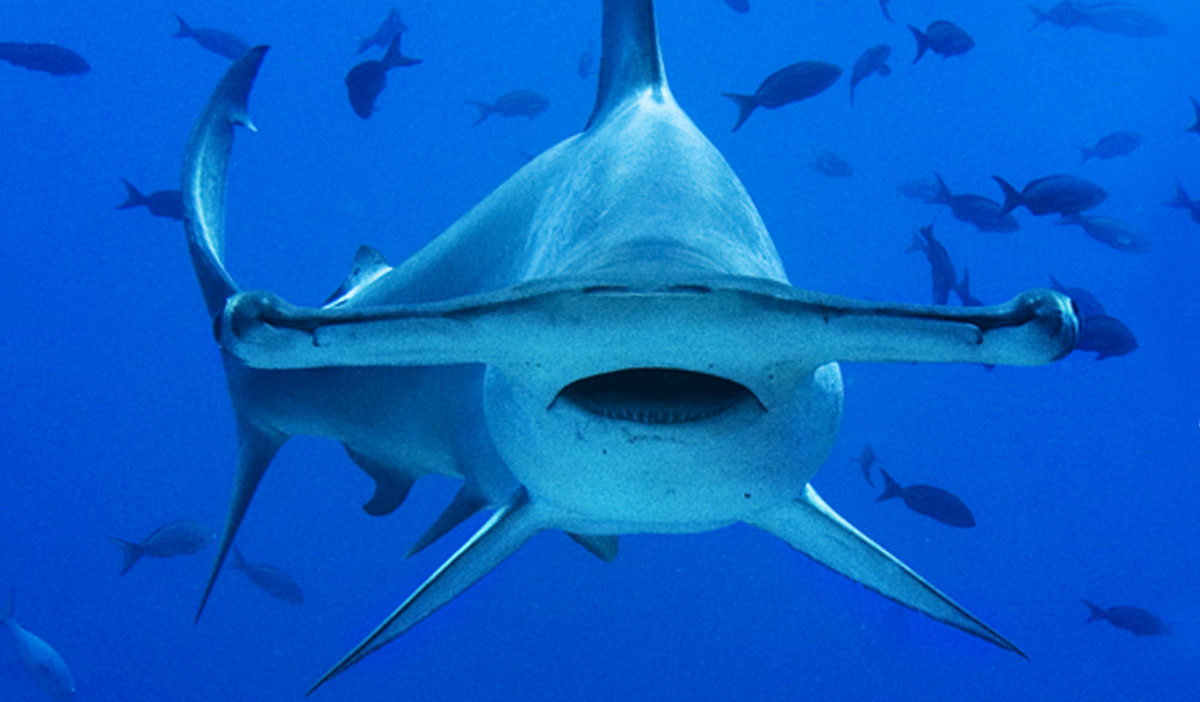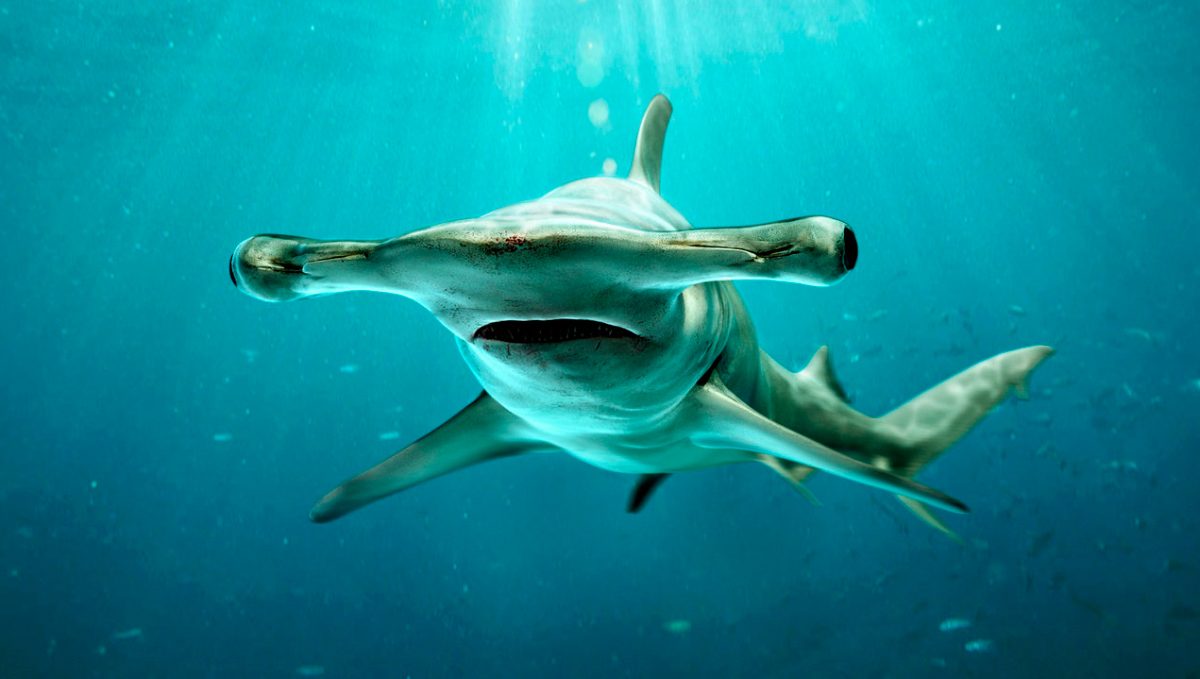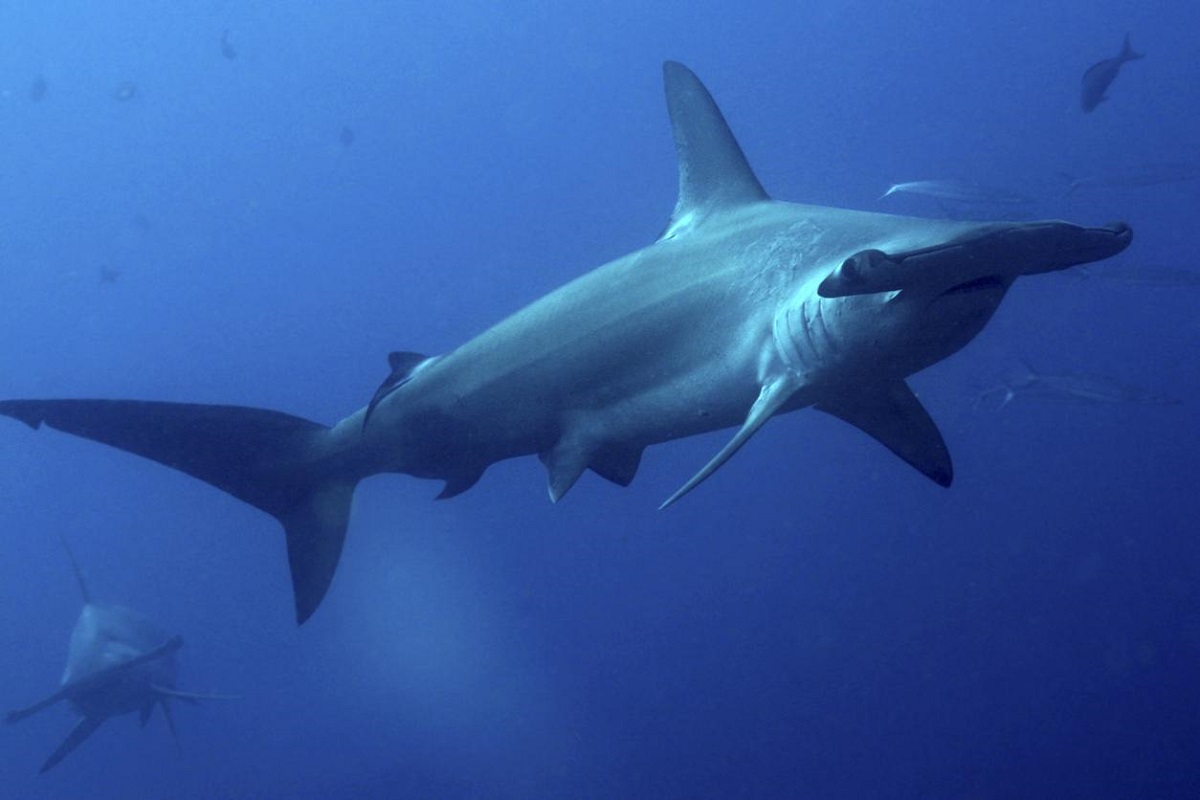
One of the most distinctive fish species is the hammerhead shark. His head is shaped like a hammer, which makes him recognizable throughout the world. But unfortunately, that's only because people see them in cartoons, movies, documentaries, photos, books, etc. In reality, there are so few left that it is almost impossible to see one alive. If action is not taken now, it may disappear.
In this article we are going to tell you all the characteristics, way of life, feeding and reproduction of the hammerhead shark.
Key features

The hammerhead shark or Sphyrnidae is a species of shark that lives in almost all oceans, temperate or warm waters, mainly in coastal areas. Nine species of hammerhead sharks are known and they range in size from about 1 meter to 6 meters, where you can measure the giant hammerhead.
But without any doubt, what made the animal famous and distinctive was the bump on its snout, which gave it the name 'hammerhead shark' due to its resemblance to a kind of mallet. Hammerheads have much larger snouts than other sharks and their eyes are set farther apart, giving them a very distinctive appearance.
Another of its most peculiar characteristics is that the hammerhead shark has 7 senses. In addition to their senses of touch, hearing, smell, sight, and taste, hammerhead sharks have one sense that allows them to detect frequency waves caused by the movement of fish, and another sense that allows them to detect electric fields and find hidden or hidden objects. buried.
It is undoubtedly one of the most impressive animals in the world, with genuine appeal to humans, either displaying it in an aquarium or trading it for its fins. It was a shame for them that the man had to stare at him.
Hammerhead Shark Description
The first physical feature that the hammerhead shark stands out for is its T-shaped head, and as I already mentioned, a bulge that gives it its hammerhead shark name. The reason for this is unclear, apart from several studies that have only concluded that it evolved in such a way that the placement of its eyes could improve the animals' vision.
Of course, what stands out about hammerheads is that they have 360° vision, which means they can see both up and down at the same time. This ability allows them to find food. Hammerhead sharks have a vertebral structure that allows efficient locomotion when searching for food.
Other physical features, for example, have "nostrils" at the tip of the head extension and large eyes at the end. Its mouth is relatively small in comparison to its head, although it has serrated teeth and is located very centrally on the underside of its head.
They also have 2 dorsal fins, the first being larger than the other. In addition, its body exhibits a useful contrasting color to camouflage itself against the seabed, since the ventral area is lighter in color while the dorsal area is light gray or green. It usually measures between 0,9 and 6 meters and weighs between 300 and 580 kilograms.
Hammerhead shark habitat
Different species of hammerhead sharks can still be found in temperate and tropical waters, along coastlines and continental shelves, almost all over the world.
Some specimens have been found in the mesopelagic belt, down to depths of 80 m. Their most common habitat is usually shallow reefs and sometimes brackish waters, making them difficult to locate, compounding the fact that many fishermen hunt them for their fins.
Feeding and reproduction

The hammerhead shark is a carnivore that typically feeds on a wide variety of prey. Their diet consists of bony fish, squid, octopus, and crustaceans, but their favorite food is rays. They will occasionally eat people.
They are animals that usually hunt alone when it comes to getting food. Through its electroreceptors and head, You can spot and capture lightning bolts hidden in the sand below.
Hammerhead sharks are a viviparous species that give birth to live young. They usually reproduce once a year through internal fertilization, and the number of young that a female has is usually related to its size. The greater his weight and length, the younger he is.
When they have to mate, a group of males take a female and insert a clip into her fallopian tube, thus transferring her sperm. When she is pregnant, the female keeps her young internally for 8 to 10 months and feeds them through the yolk sac. Later, 12 to 50 young are born, 18 cm long with soft, round heads. Newly hatched baby turtles receive no parental attention, but often congregate in warmer water and remain there until they are better developed and can fend for themselves.
Behavior and threats

Although it is an animal that is generally found alone and actually hunts alone, it is a species that lives in groups, which include up to 500 members. In these groups, each shark is part of the social structure within which they are divided and which determines their dominance within the group.
According to the size, age and sex, hammerheads establish their own group hierarchy, where they remain all day until nightfall. It is unknown why they group together, but it seems that they do so to protect themselves from larger predators and not to attack them if they are seen living together.
Despite this behavior, some species of hammerhead sharks often make migratory movements during the summer when they head to cooler waters. Also, some species live better in deeper water, while others prefer it less.
Hammerhead sharks are considered a dangerous fish for humans, although in reality they are not particularly aggressive. Most hammer tips are very small and harmless.
The man usually goes hunting and fishing not only for his meat, but also for their shark fins, which are often valuable on the black market.
The hammerhead shark has been added to the list of endangered animals and, if action is not taken soon, will join the list of species that have been wiped off the face of the earth. As always, the main danger is the insouciance of humans who fish it indiscriminately for its fins and only for its fins, which are considered a delicacy. It is not the only shark in danger of extinction, since tiger sharks and bull sharks have also been added to the IUCN Red List.
Hammerhead sharks can reach a length of about four meters. And they have a habit that makes fishing easier as they tend to swim in groups, which tend to congregate in specific areas, like the Galapagos and Costa Rica. Fishing boats crash into them, crashing into a school of fish, cutting off their fins. They use it to make a soup that is famous throughout the Asian continent. The rest of the shark's body is put there, its meat is worthless.
I hope that with this information you can learn more about the hammerhead shark and its characteristics.